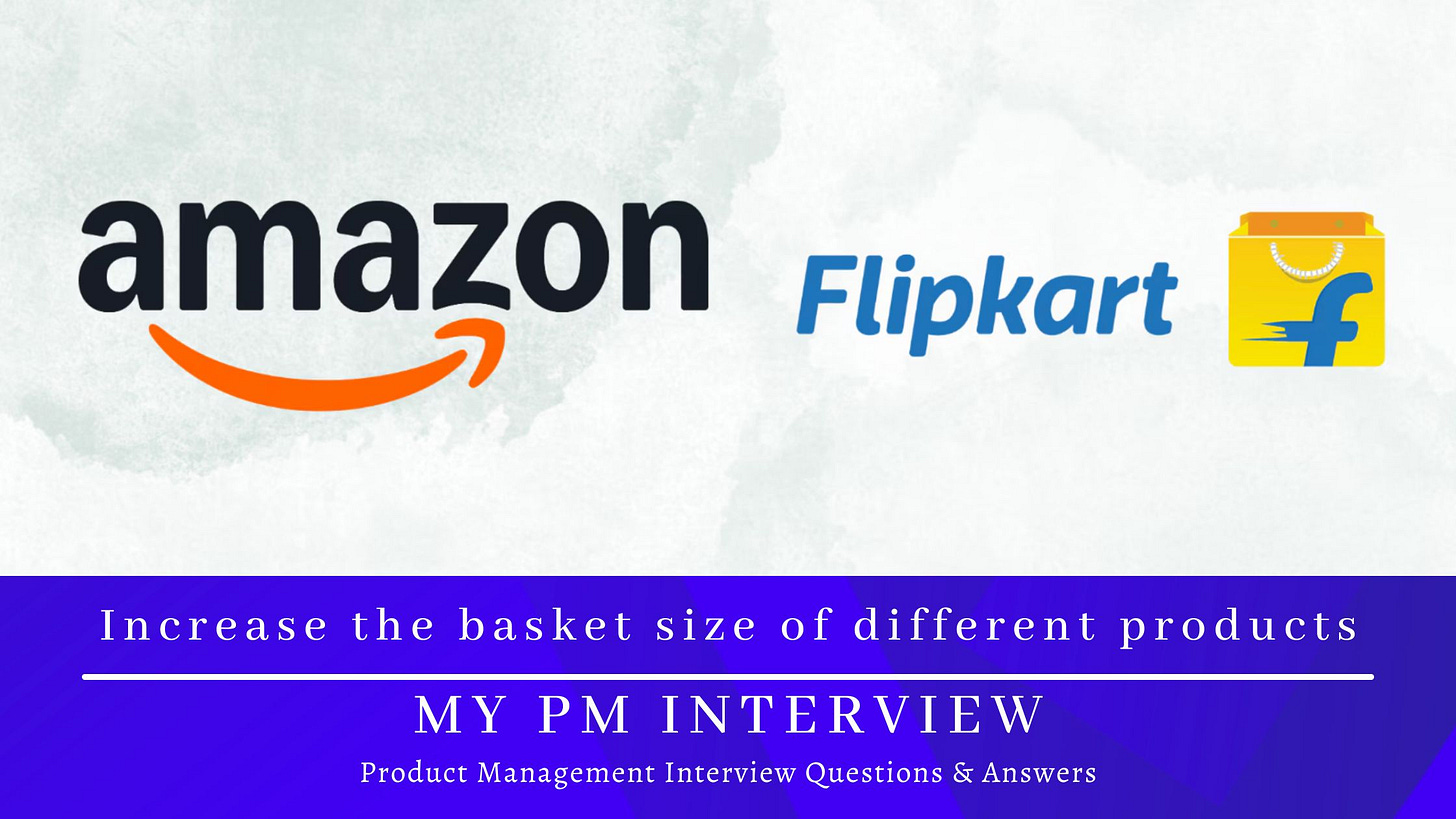How would you increase the basket size of different products for users?
Amazon Product Manager Interview : How would you increase the basket size of different products for users?
1. Clarify the Problem
Before jumping into solutions, it’s critical to fully understand the scope of the problem by asking the right questions. This helps ensure alignment with business goals and avoids building irrelevant or low-impact features.
What does “basket size” mean?
In most consumer products — particularly e-commerce, food delivery, or digital marketplaces — “basket size” refers to the total number of items or total monetary value of products added to a single cart or transaction. The goal here is to increase the average order value (AOV) or units per order (UPO).
Clarifying Questions:
1. What kind of platform are we referring to?
Is it an e-commerce platform like Amazon, a grocery delivery app like Instacart, or a food delivery service like DoorDash? This will shape how we approach user behavior and monetization levers.
Answer: Lets focus on e-commerce platform like Amazon.
2. Are we focusing on consumer monetization, business monetization, or developer/API monetization?
Answer: Let's focus on consumer-side monetization, specifically increasing revenue per transaction by encouraging users to add more items to their cart in each session.
3. Is there a particular region or market we should prioritize (e.g., U.S., Europe, India)?
Answer: Think globally, but keep regional shopping behaviors and product catalog structures in mind.
4. Should the monetization ideas be additive to existing revenue channels (ads, subscriptions, etc.), or can we rethink existing ones?
Answer: Focus on net-new ideas that increase basket size—without disrupting or cannibalizing existing conversion funnels or monetization levers like ads or premium offerings.
5. What are the key constraints to follow?
Answer: Maintain a frictionless checkout experience; avoid dark patterns or aggressive upselling. User trust, ease of purchase, and perceived value must be preserved at all times.
6. Should we optimize for mobile, web, or both?
Answer: Mobile-first, since most transactions now originate from mobile apps—but ensure feature parity or simplified versions exist on web for high-value desktop users.
2. Define the Goal
Increase the average order value (AOV) and/or average units per order (UPO) by encouraging users to add more items across different product categories — without harming user trust, satisfaction, or conversion rate.
3. User Segments
The goal here is to identify distinct types of users based on purchasing behavior and tailor strategies accordingly. Segment users by purchasing behaviour:
1. Convenience Shoppers –
Busy professionals or parents who prioritize speed and ease of purchase. They prefer quick reordering, “buy again” options, and one-stop checkouts. Their baskets are often routine but low in diversity.
2. Browsing Buyers –
Users who enjoy exploring product categories and discovering new items. They often spend more time on the platform, are drawn to visual merchandising (e.g., “inspired by your browsing”), and are more open to upsells and bundles.
3. Deal Seekers –
Highly price-sensitive shoppers who frequently search for discounts, combos, or cashback offers. They are more likely to increase basket size when incentivized through time-bound promotions or threshold-based rewards (e.g., “Spend ₹500 more to get free delivery”).
4. Category Specialists –
Users who shop deeply within a single category—e.g., a skincare enthusiast, a gamer, or a pet parent. They may buy multiple complementary items together (e.g., shampoo + serum + moisturizer) but rarely branch out to unrelated categories.
5. Infrequent / Low-Trust Users –
First-time or low-frequency users who typically make small, low-risk purchases. Their baskets are limited due to lack of trust, limited familiarity with the platform, or friction in discovery.
Selected Segment: Browsing Buyers
Reasoning:
Browsing Buyers already demonstrate exploratory behavior and longer session times, making them highly amenable to nudges like bundles, recommendations, and upsells.
4. List down the User Pain Points
Considering the Browsing Buyers segment, their pain points relevant to increasing basket size include:
Users often get lost in endless category pages or irrelevant listings. There’s a lack of smart, curated bundles or tailored suggestions that make discovery feel smooth, relevant, and exciting.
When a user adds an item to their cart (e.g., a yoga mat), the platform fails to recommend logical add-ons (e.g., resistance bands, water bottle) in a timely or meaningful way.
There's no clear incentive at checkout to add one or two more items (e.g., “add ₹200 to unlock a 10% discount”), nor context-aware suggestions like complementary items under ₹99.
Unlike curated “looks” or “kits” on fashion/beauty sites, most platforms show products in isolation, failing to inspire multi-item purchases based on themes like “weekend getaway,” “monsoon-ready,” or “festive gifting.”
Generic offers (like sitewide discounts) don’t strategically nudge users to build bigger baskets. There’s limited use of spend-based gamification (“you’re ₹150 away from a surprise gift!”) to boost average order value.
Users hesitate to add more items if the platform experience feels clunky (e.g., losing cart state, lag while switching categories), or if returns/refunds feel painful—discouraging exploratory or trial purchases.
5. List down the solutions
Here are a few solutions to increase basket size, tailored to the browsing buyer segment:



